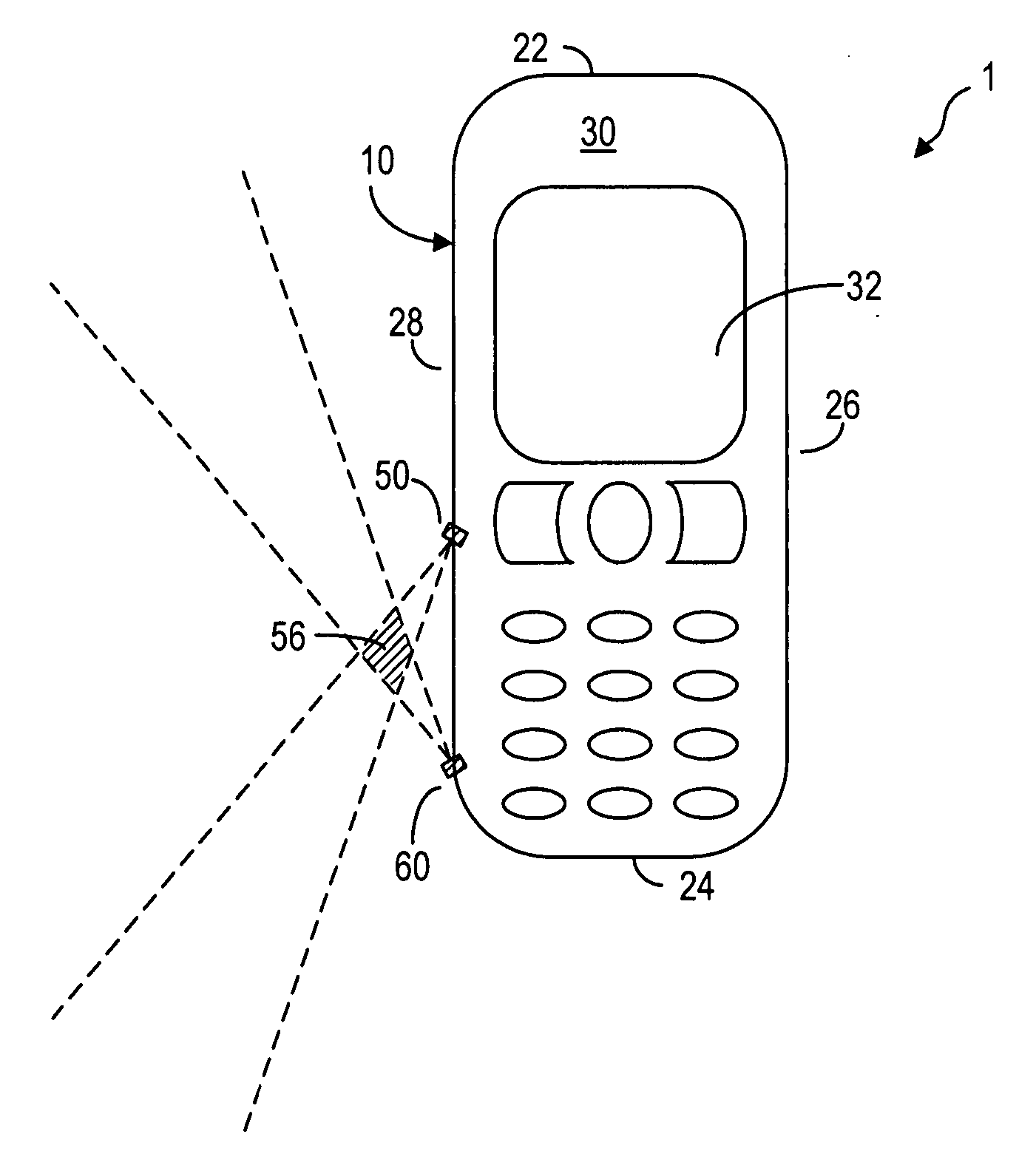Electronic device having a proximity detector
a proximity detector and electronic device technology, applied in the direction of electric signalling details, fire alarms, instruments, etc., can solve the problems of not being able to meet the needs of small electronic devices, mobile phone users may find it uncomfortable to expose the head and ear to radioactive sources, and delivering, storing and handling a large quantity of radioactive raw materials for manufacturing may not be a viable option for cell phone manufacturers
- Summary
- Abstract
- Description
- Claims
- Application Information
AI Technical Summary
Benefits of technology
Problems solved by technology
Method used
Image
Examples
Embodiment Construction
[0039] According to the present invention, the opto-electronic components disposed on a portable device, such as a mobile phone, for smoke detection do not require a dark chamber to be functional. As shown in FIGS. 3a to 6b, the opto-electronic components are disposed on the external housing of the mobile phone. As shown in FIG. 3a to 6b, the mobile phone 1 has an external housing 10 to house a variety of electronic components (see FIG. 10). As shown, the mobile phone 1 has a display 32 disposed on the front surface 30 of the mobile phone. The housing 10 has four side surfaces: upper surface 22, lower surface 24, right surface 26 and left surface 28.
[0040] The opto-electronic components 50 and 60 used for smoke detection can be disposed on one or two side surfaces, as shown in FIGS. 3a-4b. In one embodiment of the present invention, the opto-electronic components 50 and 60 are both disposed near or on the lower surface 24 of the mobile phone 1, as shown in FIG. 3a. In another embod...
PUM
 Login to View More
Login to View More Abstract
Description
Claims
Application Information
 Login to View More
Login to View More - R&D
- Intellectual Property
- Life Sciences
- Materials
- Tech Scout
- Unparalleled Data Quality
- Higher Quality Content
- 60% Fewer Hallucinations
Browse by: Latest US Patents, China's latest patents, Technical Efficacy Thesaurus, Application Domain, Technology Topic, Popular Technical Reports.
© 2025 PatSnap. All rights reserved.Legal|Privacy policy|Modern Slavery Act Transparency Statement|Sitemap|About US| Contact US: help@patsnap.com



